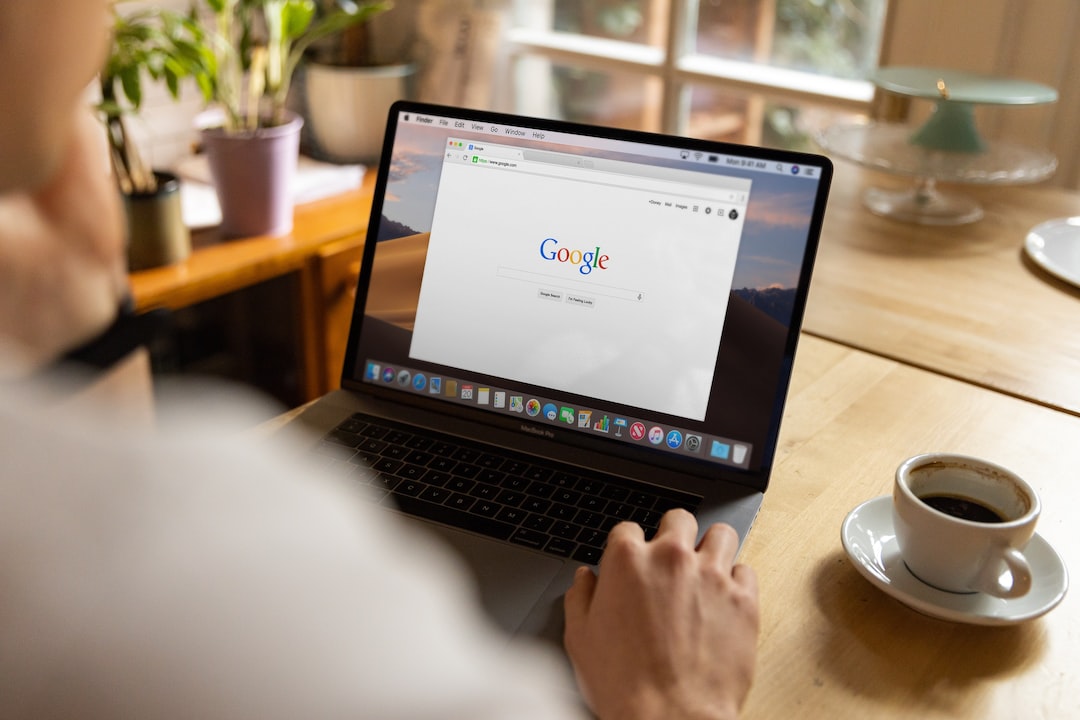Discover How Quickly Our Google Images Removal Process Works!

Learn More About Our Google Images Removal Process...
Your information will always be safe with us. Clicking this button will open a box to input contact information details.
Google Images is a search functionality offered by Google that allows users to search the Internet for images. Google Images began in 2001 and added reverse image search functionality in 2011. Reverse image search allows a user to upload an image and find similar or identical examples of that image online.
In 2014, Internet Trends reported that people uploaded an average of 1.8 billion digital images every single day. That added up to approximately 657 billion photos per year — and that was in 2014 when Instagram was still in its infancy!
What is Google Images?
People use Google Images to find photos, videos, graphics, and other visual information online. Google added captions to its image results, which display the title of and link to the web page where each image is published.
What is Online Defamation / Cyber Libel?
Online defamation (or cyber libel) is generally defined as a false, published statement that is damaging to the reputation of an individual or business.
Modified photos or images with hurtful or hateful commentary are increasingly common on social media and will typically be indexed on Google Images. Based on the specific facts and circumstances, these modified images may meet the legal standard for defamation.
Truth is an absolute defense of a claim of online defamation. For example, a photo displayed with the words “Sex Offender” may meet the legal standard for online defamation if the individual is an innocent party without a criminal record, however, if the individual was convicted of a sex offense the very same photo would be protected speech.

Why is it Difficult to Remove a Photo from Google Images?

Removing a photo from Google Images can be very difficult. If you want to remove a photo from appearing in Google Images search results, you’ll usually need to contact the individual(s) who own the Website that is hosting the image.
If you are not sure how to find the contact at another Website, you can perform a Whois (who is?) search for the site owner by searching “whois www.example.com” or visiting https://lookup.icann.org/.
The email address to contact the webmaster can often be found under “Registrant Email” or “Administrative Contact.”
Google will remove content for specific legal reasons, such as a DMCA copyright violation or child sexual abuse imagery.
Google will also remove “revenge porn” (non-consensual nude and sexually explicit images).
Google has several requirements that must be met before removing sexually explicit content:
- You’re nude or shown in a sexual act
- You intended the content to be private and the imagery was made publicly available without your consent; or
- You didn’t consent to the act and the imagery was made publicly available without your consent
You may need to obtain a court order for the removal of a specific image.
Fair use is another obstacle to successfully removing copyrighted images appearing on Google Images.
Section 230 of the Communications Decency Act
The Communications Decency Act of 1996 (CDA), broadly protects online service providers (such as social media companies or search engines like Google) from being held liable for displaying or removing user-generated content.
The Communications Decency Act (CDA), when created, was originally intended to prevent indecent material to minors on the Internet.
Section 230 of the CDA has enabled the rapid expansion of the Internet by enabling the use of user-generated content, but also led to the proliferation of copyright-protected content and made it increasingly difficult to police the misuse of intellectual property and enforce legitimate intellectual property rights.

What is Fair Use?
Fair use is a fundamental element of copyright law that allows the use of a copyrighted work without permission from the copyright holder under specific circumstances.
Google Images is a classic example of Fair Use, as it allows the public to search and view images hosted on other Websites.
Fair Use is why you cannot sue Google for simply “allowing” an image to appear on its Google Images database, although you may have a valid copyright claim against the Website hosting the image.
Copyright law provides four factors for courts to consider in determining whether a use is fair:
- The purpose and character of the use
- The nature of the copyrighted work
- The portion used in relation to the copyrighted work as a whole
- The effect of the use upon the potential market
If you believe the use of an image, video, or other graphic is not Fair Use it may be possible to remove the content from the Website hosting the content and then remove the image, video, or other graphics from Google Images.
Book A Free Strategy Session Call Today To Start Managing Your Reputation
How to Use DMCA to Remove Copyright Content from Google Images

Google will comply with notices of copyright infringement pursuant to the Digital Millennium Copyright Act (DMCA).
You can use a DMCA notice to remove pictures from Google Images if they infringe on your copyright.
Examples of content to which you may have a copyright interest are pictures (of you, taken by you, owned by you), videos (of you, taken by you, owned by you), or other graphics (of you, created by you, owned by you).
You will have to submit a copyright removal request and follow Google’s process for review and approval.
Not all DMCA takedown requests are approved, so be patient or consult an attorney for a reputation management expert.
A DMCA notification must include the following:
Signature: Copyright owner’s signature or the signature of the person authorized to act on behalf of the owner in physical or electronic form.
Identify the Infringing Material: The takedown notice should clearly identify the copyrighted work(s) infringed.
Identify the Infringing Activity and its Location on the Site: The takedown notice should clearly identify the activity that is claimed to be infringing, and information reasonably sufficient to permit the service provider to locate the infringing activity on its site. It is easiest to include the link or web address (URL) for the infringing material.
Contact Information: The takedown notice should contain the notice sender’s contact information. At minimum, you should include your email address, but a physical address or telephone number may also be included.
Good Faith Belief: The takedown notice should include a statement that the notice sender has a good faith belief that use of the material in the manner complained of is not authorized by the copyright owner, its agent, or the law.
Statement of Accuracy: The takedown notice should include a statement that the information in the takedown notice is accurate, and under penalty of perjury, that the notice sender is authorized to act on behalf of the copyright owner.
Since many people who posts content online choose to remain anonymous, it may be necessary to take legal action to determine the individual’s identity. The DMCA allows a copyright owner (or agent) to request a court to issue a subpoena to an Internet Service Provider ordering the disclosure of the identity of an alleged copyright infringer.
To obtain the subpoena the request must include the following elements:
- A copy of the takedown notice that was sent to the service provider;
- A proposed subpoena; and
- A sworn declaration that explains that: (i) the purpose for which the subpoena is sought is to obtain the identity of an alleged infringer, and (ii) that such information will only be used for the purpose of protecting the owner’s copyrights.
To learn more about DMCA or the subpoena process, you should consult an attorney or contact an online reputation management service.
How to Remove a Photo on Google Images
There are several ways to remove a photo on Google Images.
You can contact the Webmaster and ask him or her to remove or deindex the photo, you can submit a DMCA copyright takedown notification if you own the copyright to the photo or video. If you can identify the name or location of the hosting company, for example an image with hosting in UAE, you can also request image removal.
Or you can hire an online reputation management service to ensure fast and affordable removal of photos or images that appear on Google Images.
Reputation Rhino has helped thousands of people learn how to remove or suppress negative online search results.
We can help you remove a photo on Google Images. Contact us today!
Yes! I want to Spark More Interest!
Reputation Rhino's Team of Award-Winning SEO Experts will help you stay relevant and in your targeted audience’s searches, promote a positive online image, and produce more high-quality leads that drive sales.
Your information will always be safe with us. Clicking this button will open a box to input contact information details.
Got questions? We've got answers!
What is Google Images?
Google Images is a search functionality offered by Google that allows users to search the Internet for images. It allows users to find photos, videos, graphics, and other visual information online.
What is Online Defamation / Cyber Libel?
Online defamation (or cyber libel) is a false, damaging statement published online that harms the reputation of an individual or business.
Why is it Difficult to Remove a Photo from Google Images?
Removing a photo from Google Images can be challenging. You usually need to contact the website owner hosting the image to request removal. There are exceptions, such as specific legal reasons or "revenge porn."
What is Fair Use?
Fair use is a concept in copyright law that allows limited use of copyrighted material without permission from the copyright holder under specific circumstances.
Can Google be sued for images displayed on Google Images?
Google cannot typically be sued for simply allowing an image to appear on its Google Images database, but you may have a valid copyright claim against the website hosting the image.
How can I use DMCA to remove copyright content from Google Images?
You can use a Digital Millennium Copyright Act (DMCA) notice to request the removal of pictures from Google Images that infringe on your copyright. The process involves submitting a copyright removal request.

